Abstract
Analyses of a nationally representative survey of 1,880 15- to 19-year-old men were conducted to examine factors associated with (a) the age when first sexual intercourse occurred and (b) whether a condom or other contraceptive method was used at first intercourse. Discrete time-event history models assessed factors influencing their age until first intercourse. Black males began sexual activity significantly earlier than white or Hispanic males. Males who had been held back in school also began sexual activity earlier. If a respondent's mother had been a teenager when she first gave birth, or if his mother was employed during his childhood, he was more likely to initiate intercourse early. A variety of combinations of AIDS and sex education topics were examined for their association with one's age at the time of first intercourse: two topics were associated with earlier intercourse, and one was associated with delays in first intercourse. Logistic regression models examined correlates of using a condom or any effective male or female method of contraception at first intercourse: having received education about birth control was marginally associated with increased probability of using a condom or any effective male or female contraceptive method at first intercourse. These findings indicate the relevance of integrated approaches to school-based sex and AIDS education in delaying intercourse and promoting use of contraceptive methods.
Full text
PDF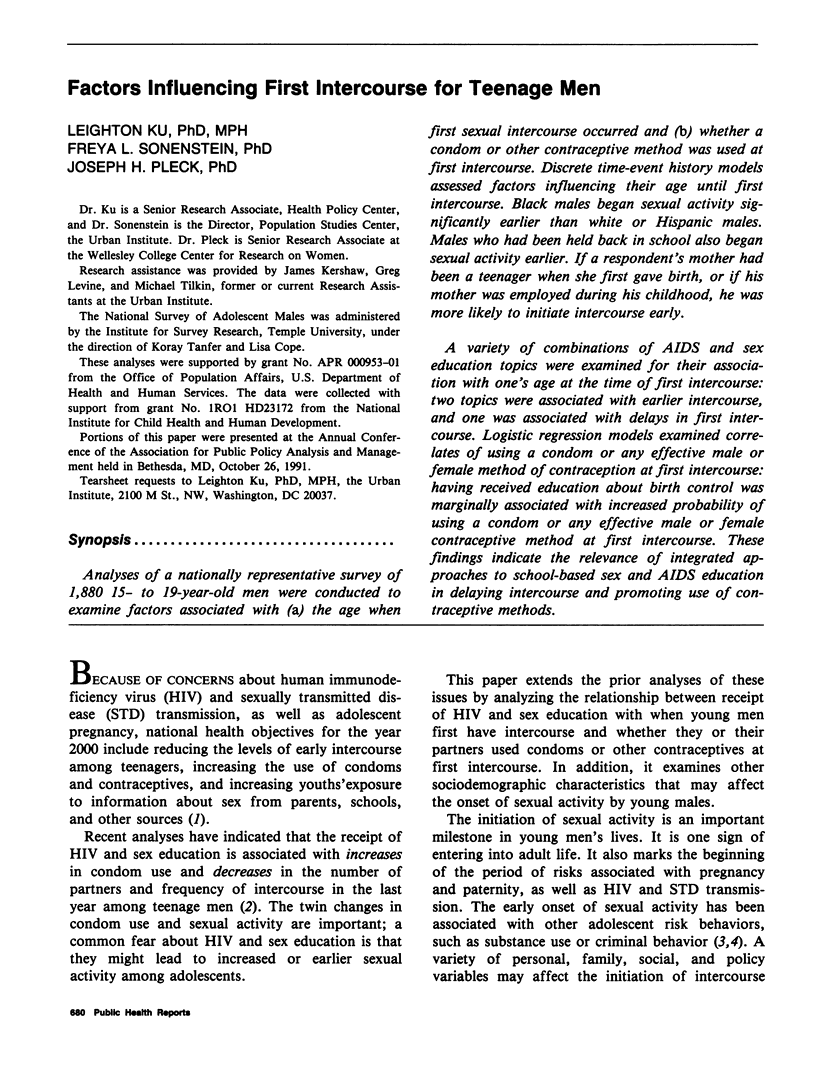
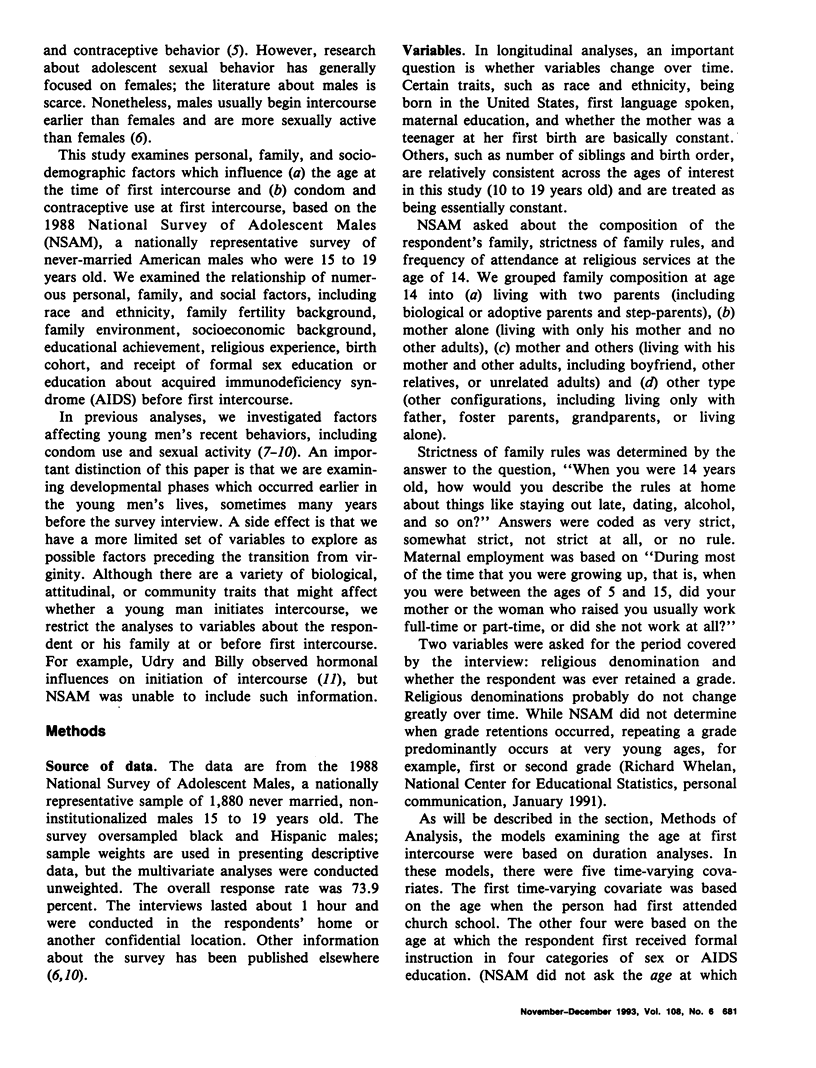
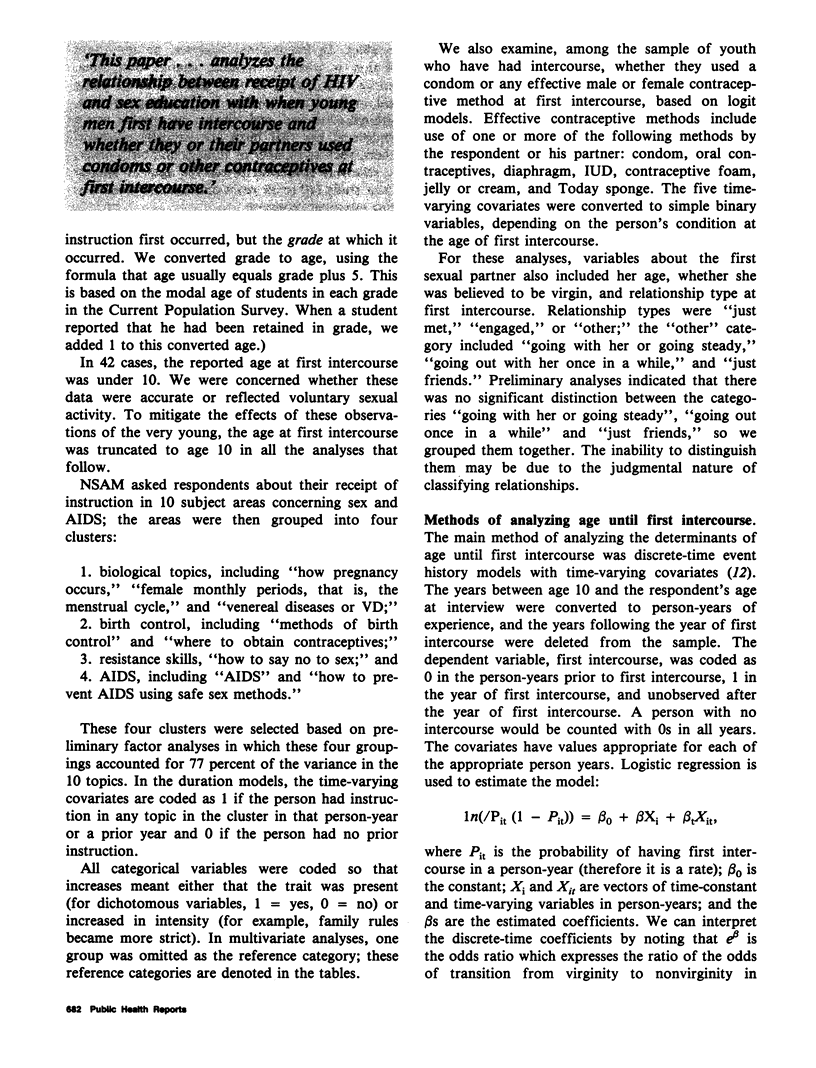
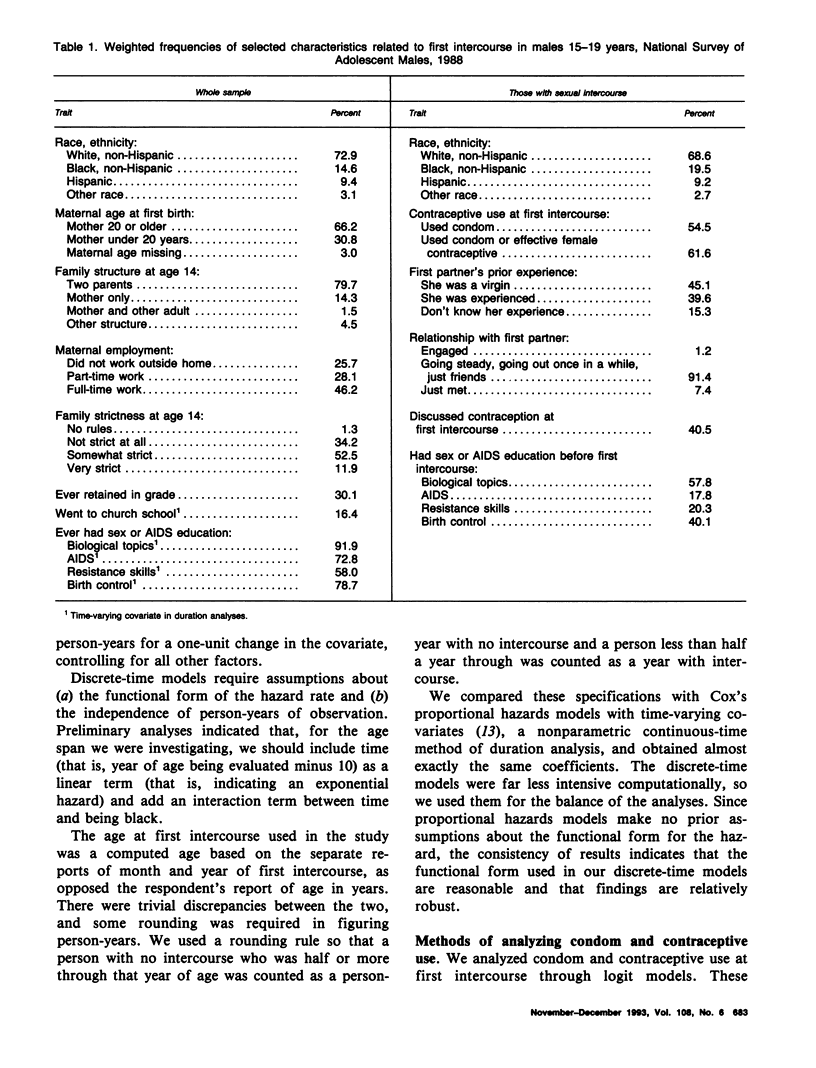
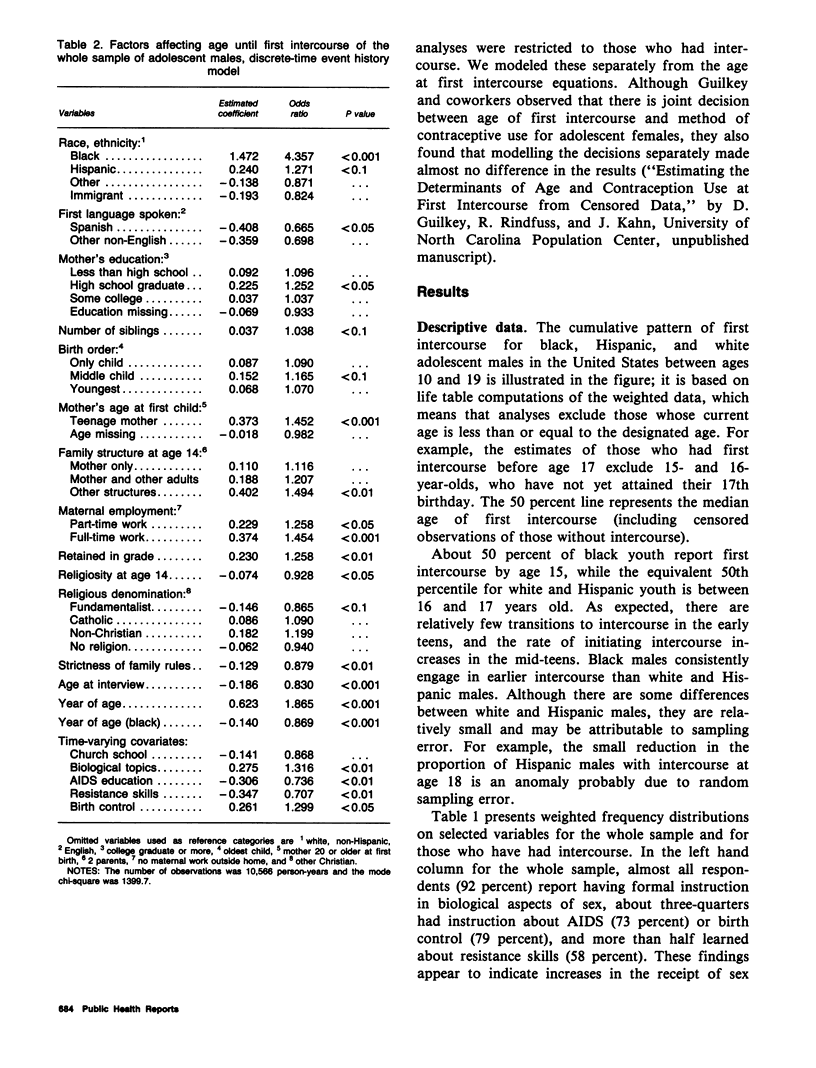
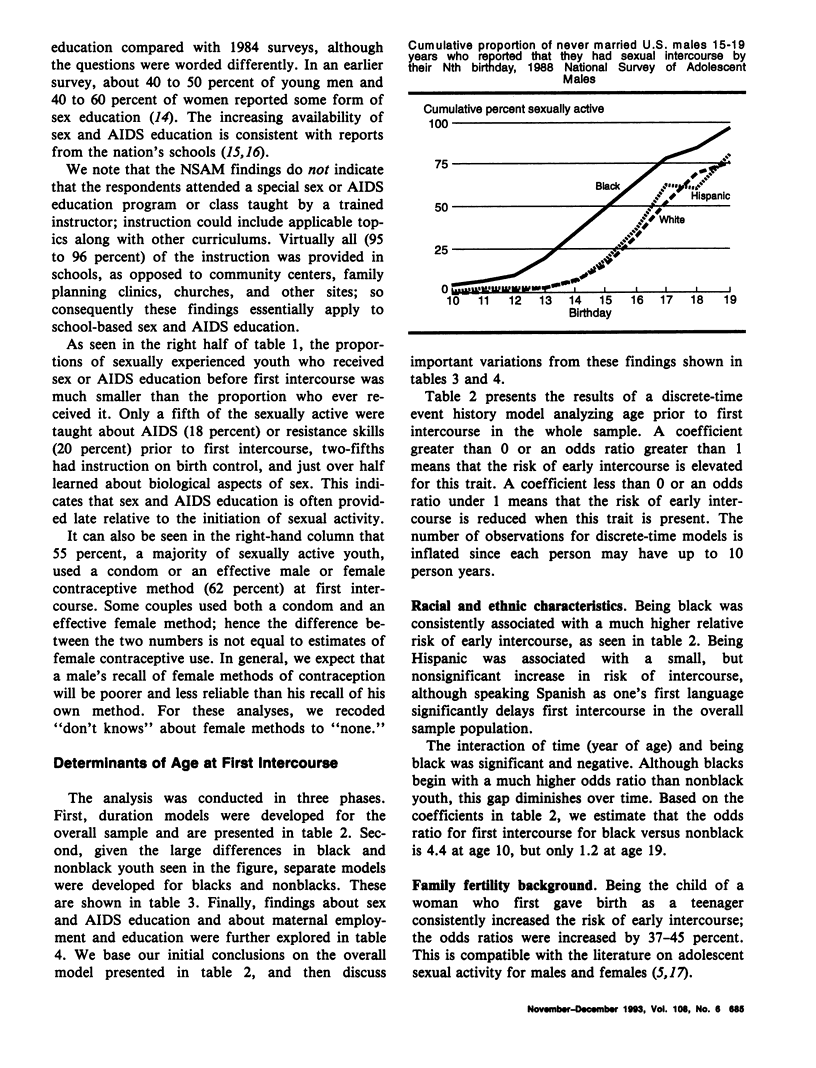
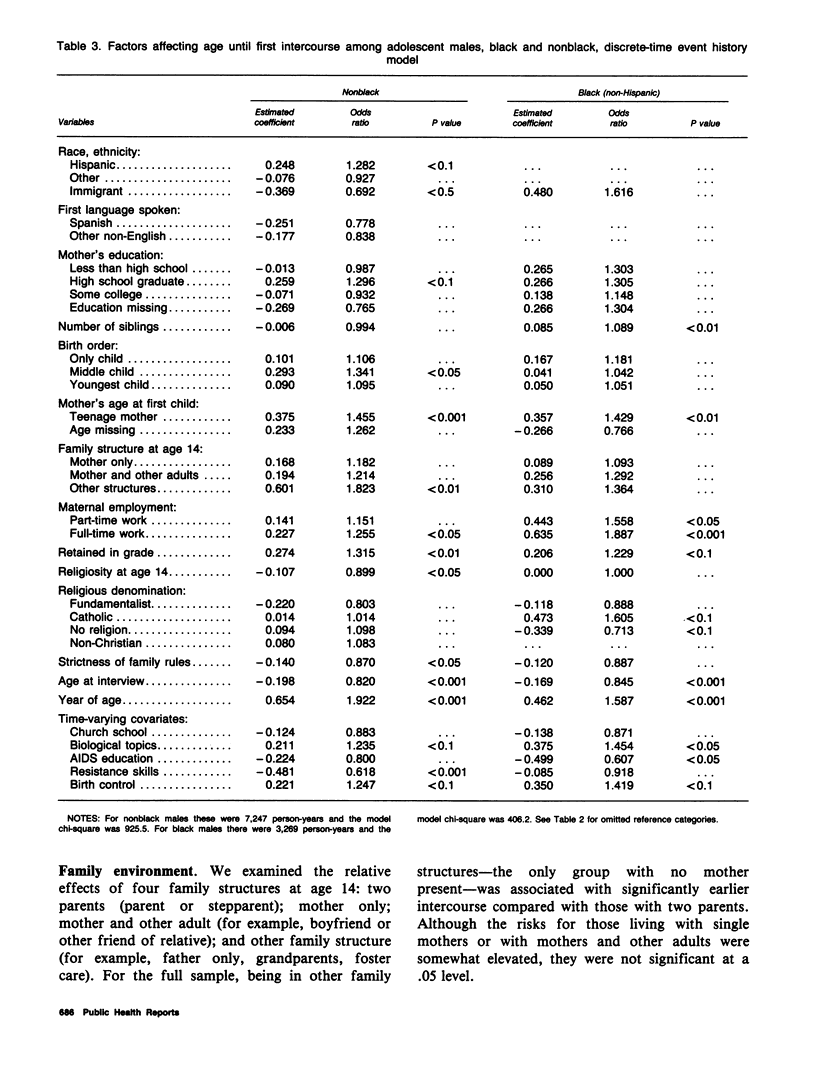
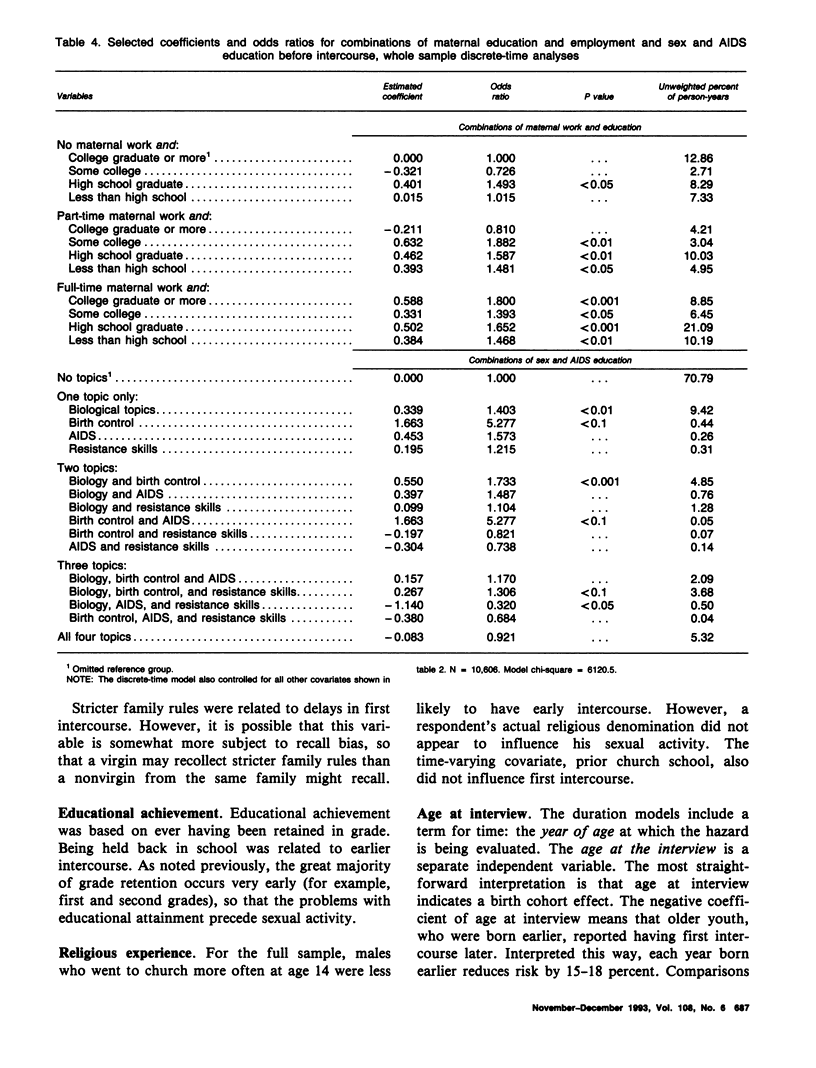
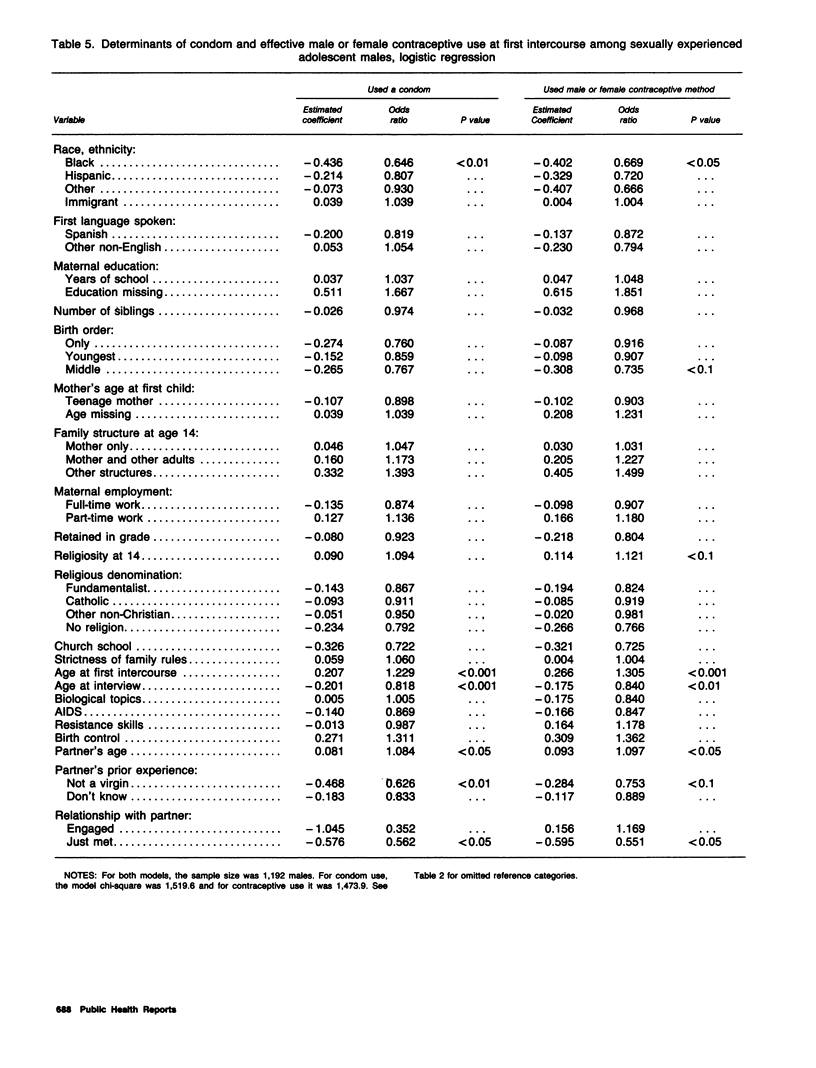
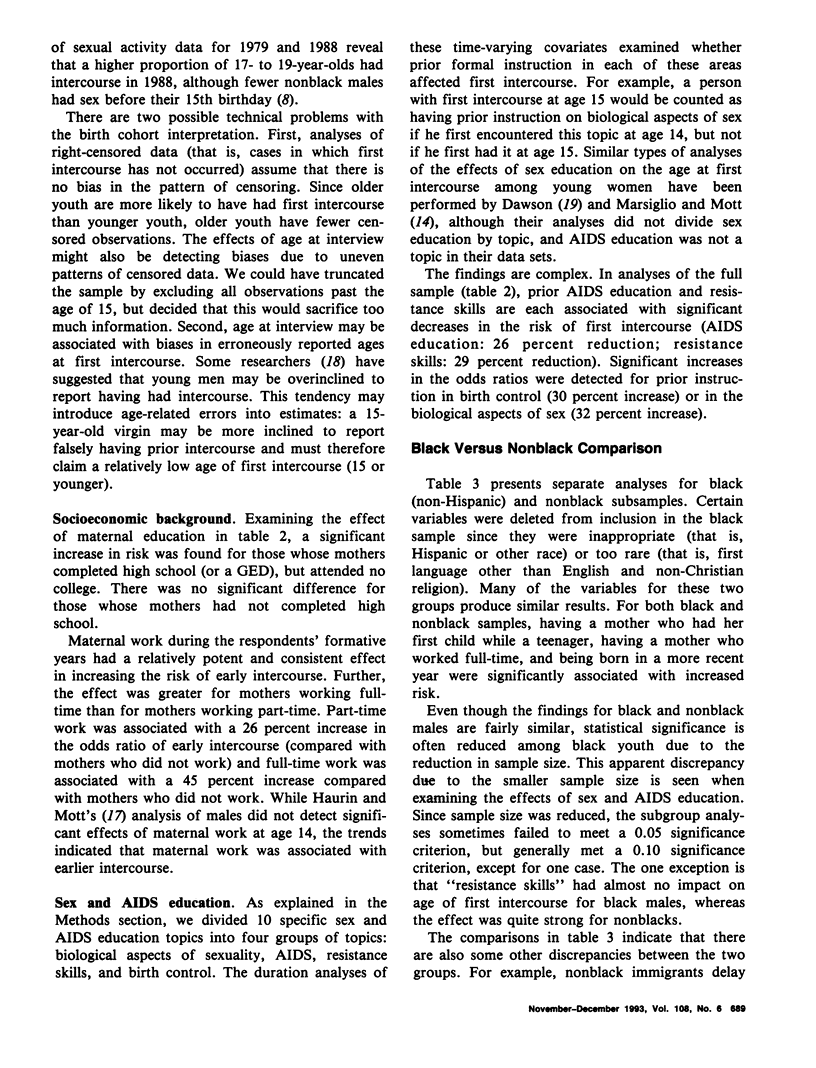

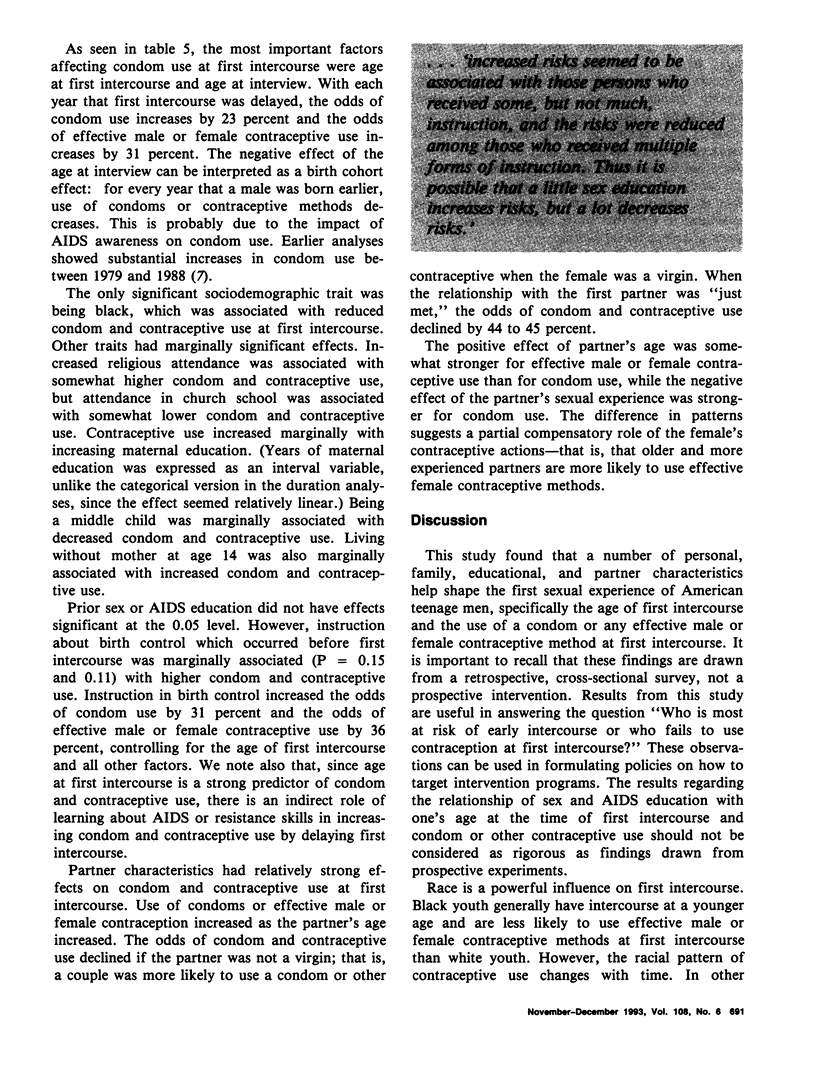
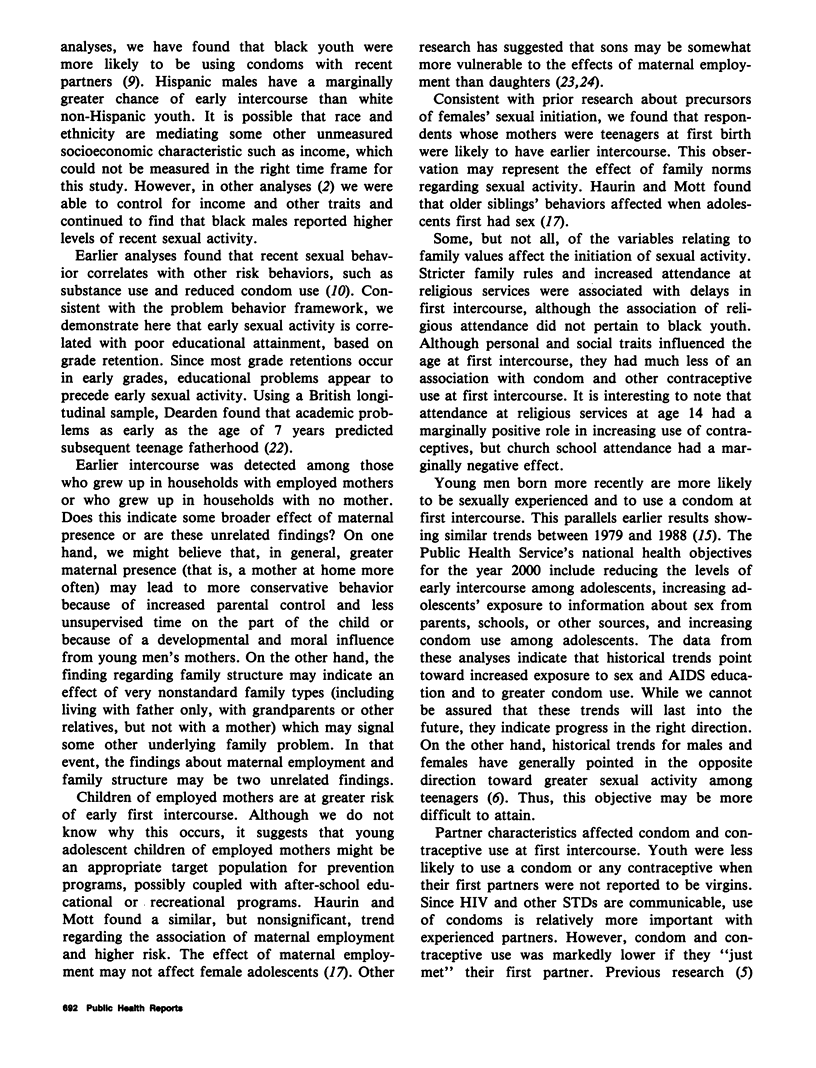
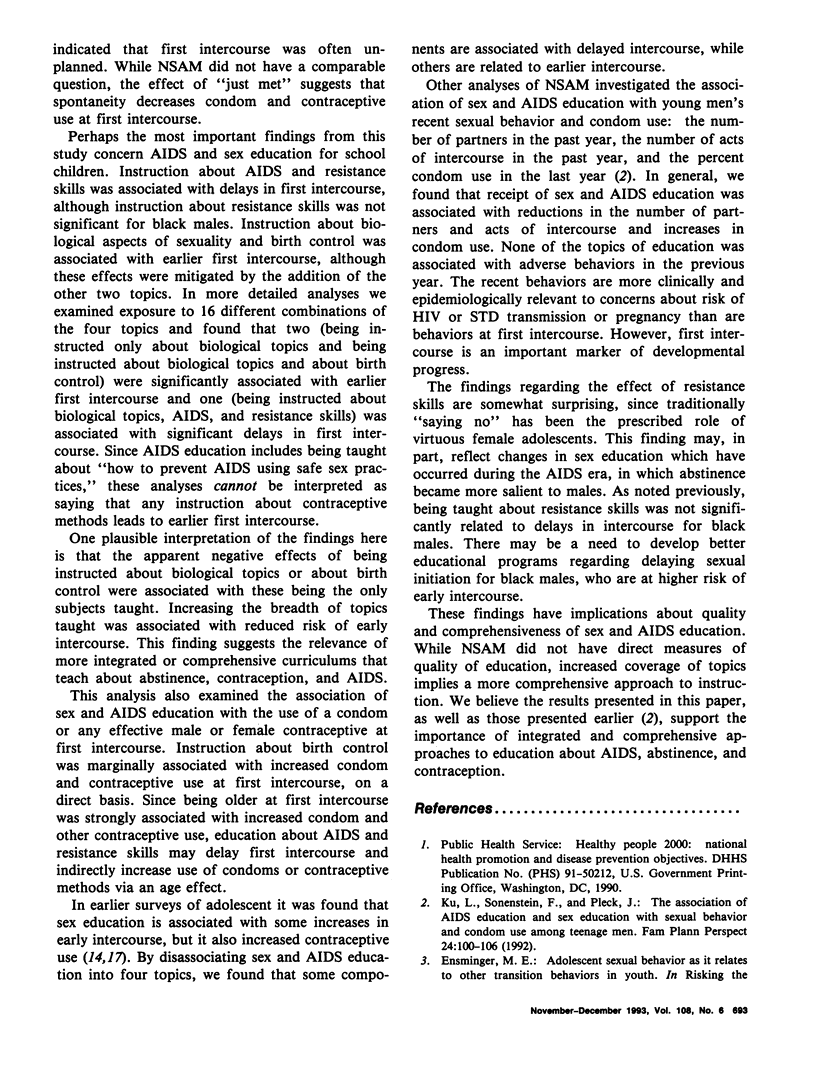
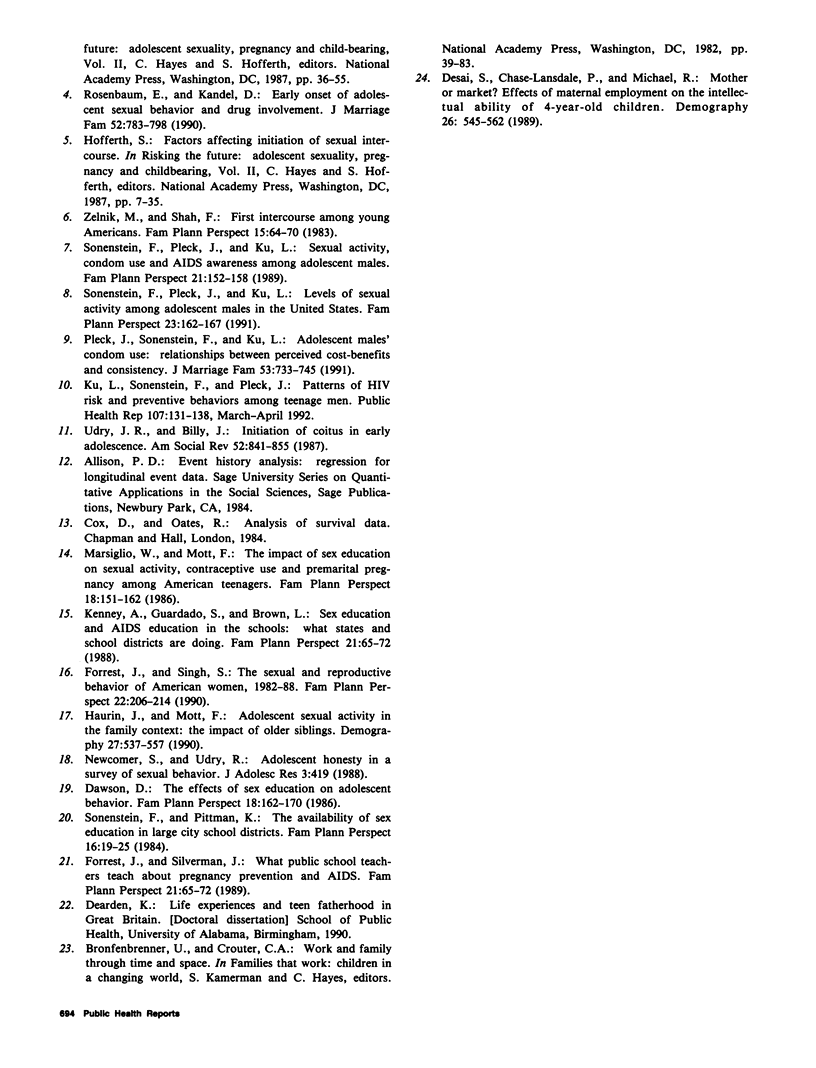
Selected References
These references are in PubMed. This may not be the complete list of references from this article.
- Dawson D. A. The effects of sex education on adolescent behavior. Fam Plann Perspect. 1986 Jul-Aug;18(4):162–170. [PubMed] [Google Scholar]
- Desai S., Chase-Lansdale P. L., Michael R. T. Mother or market? Effects of maternal employment on the intellectual ability of 4-year-old children. Demography. 1989 Nov;26(4):545–561. [PubMed] [Google Scholar]
- Forrest J. D., Silverman J. What public school teachers teach about preventing pregnancy, AIDS and sexually transmitted diseases. Fam Plann Perspect. 1989 Mar-Apr;21(2):65–72. [PubMed] [Google Scholar]
- Forrest J. D., Singh S. The sexual and reproductive behavior of American women, 1982-1988. Fam Plann Perspect. 1990 Sep-Oct;22(5):206–214. [PubMed] [Google Scholar]
- Haurin R. J., Mott F. L. Adolescent sexual activity in the family context: the impact of older siblings. Demography. 1990 Nov;27(4):537–557. [PubMed] [Google Scholar]
- Ku L. C., Sonenstein F. L., Pleck J. H. The association of AIDS education and sex education with sexual behavior and condom use among teenage men. Fam Plann Perspect. 1992 May-Jun;24(3):100–106. [PubMed] [Google Scholar]
- Ku L., Sonenstein F. L., Pleck J. H. Patterns of HIV risk and preventive behaviors among teenage men. Public Health Rep. 1992 Mar-Apr;107(2):131–138. [PMC free article] [PubMed] [Google Scholar]
- Marsiglio W., Mott F. L. The impact of sex education on sexual activity, contraceptive use and premarital pregnancy among American teenagers. Fam Plann Perspect. 1986 Jul-Aug;18(4):151–162. [PubMed] [Google Scholar]
- Sonenstein F. L., Pittman K. J. The availability of sex education in large city school districts. Fam Plann Perspect. 1984 Jan-Feb;16(1):19–25. [PubMed] [Google Scholar]
- Sonenstein F. L., Pleck J. H., Ku L. C. Levels of sexual activity among adolescent males in the United States. Fam Plann Perspect. 1991 Jul-Aug;23(4):162–167. [PubMed] [Google Scholar]
- Sonenstein F. L., Pleck J. H., Ku L. C. Sexual activity, condom use and AIDS awareness among adolescent males. Fam Plann Perspect. 1989 Jul-Aug;21(4):152–158. [PubMed] [Google Scholar]
- Zelnik M., Shah F. K. First intercourse among young Americans. Fam Plann Perspect. 1983 Mar-Apr;15(2):64–70. [PubMed] [Google Scholar]


